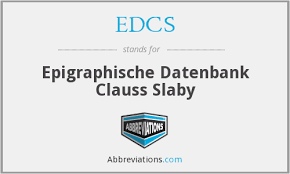H3
Reference HEp 2002, 296 | Description | Lyrics | Location | Chronology | Epigraphic edition | Translation | Apparatus | Comentary | Type of verse | Text divided into verses and metric signs | Images | Bibliography | Link to DB | Author |
H3
Description
- Idno filename 22/01/0011
- Type of inscription: Sepulcralis
- Support: Altar
- Material: Limestone Material Description: Arenaria, polished with yellowish stucco.
- Conservation status: With the remains of an engraved inscription (approximately three lines).
-
Epigraphic field:
- Layout: STYLOW indicates triangular interpunctions which cannot be seen in the photograph or the mould.
- Lost
Lyrics
- Font:Cursiva
- Letter size:3-4 cm
- Description of the letters:Cursive script that is difficult to read (measurements taken from the plaster mould).
Location
- Place of discovery: GIMENO and STYLOW report that it was found embedded in the foundations of the Islamic walls during the restoration of the Puerta de Sevilla in 1998, where it preserved nowadays again buried.
- Geolocation
- Location with Modern Nomenclature España / Huelva / Niebla
- Location with Old Nomenclature Hispania / Baetica / Hispalensis / Ilipula
Chronology
- Inscription's dating: Between year 1 and year 99
Type of verse
- Type of verse: Dactílico (ritmo)
- Verse/line correspondence: No
- Prose/verse distinction: No
Epigraphic edition
+5?+
quondam ▴ magno ▴ si+
++M+E++
Text divided into verses and metric signs
[- – -] quondam magno [- – -] [l]l|l/l|l/[n|ln|lkk|l~]
aut [ll|l]l|l/l|l/[n|lkk|l~]
Bibliography
GÓMEZ TOSCANO et al. 2001, 117 (HEp 2002, 296); H. GIMENO PASCUAL – A. U. STYLOW, sched. a. 2003; cf. CAMPOS 2001, 34.
Apparatus
1 + si fuit litt. fortasse C vel T; [—] quandum magno [—] GÓMEZ TOSCANO et al. – 2 nihil legerunt GÓMEZ TOSCANO et al.; + tertia est linea acclivis, fortasse A; cet. agnosci non possunt.
Comentary
The sequence quondam magno appears in Stat. Silv. 3,2,96 (si quondam magno Phoenix reverendus Achili | litus ad Iliacum Thymbraeaque Pergama venit | imbellis tumidoque nihil iuratus Atridae, | cur nobis ignavus amor?). The same sequence appears in a funerary carmen of the 3rd c., CLE 1963, (+ Marius factis et nomine quonda(m) | + magn[o patriae dilectus amore] | +), which allows us to suppose that this could be composed in dactylic hexameters.
Author
- Author:J. A. Correa Rodríguez, M. Limón Belén, C. Fernández Martínez
- Last Update2024-02-26 23:02:15
You can download this




